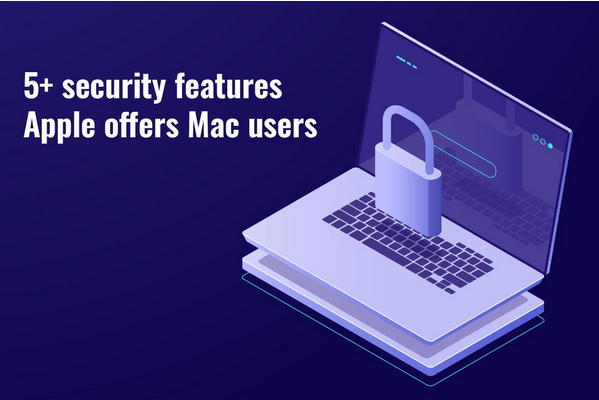Sorry to burst your bubble, but Macs are not totally safe from malware attacks. In May 2021, Apple’s Craig Federighi admitted that there was a problem because the level of malware found on Macs was unacceptable.
However, Apple has taken steps to safeguard Mac users. For example, the company released its M-series chips in 2020, and they are considered much more secure than Intel processors.
Luckily, Macs come with in-built anti-malware tools and other security measures to guard against viruses and malware threats. Let’s look at the most critical features Mac users must know.
1. Gatekeeper
Gatekeeper is an in-built macOS security technology designed to ensure that only reliable software runs on a Mac. When users download applications, installer packages, plug-ins, or any software from outside the App Store, the security technology verifies whether it is from a trusted, identified developer. Gatekeeper also checks if the software is notarized by Apple to be unaltered and free of known malicious content.
By default, this security technology ensures that all downloaded content is signed by the App Store or notarized by Apple and signed by a registered developer. However, sometimes, you may see a message popping up on your Mac’s screen saying, ‘macOS cannot verify that this app is free from malware.’ If you see this error message, it means that the software cannot be opened because the developer cannot be verified. Hence, is not authorized by the App Store and may be unsafe to use.
Therefore, download a different application or software that is reliable and won’t harm your Mac.
2. XProtect
XProtect is the in-built macOS antivirus technology that helps with the removal of malware and signature-based detection. The technology uses YARA signatures, and Apple updates them regularly for improved signature-based malware detection.
XProtect automatically identifies and blocks the execution of known malware. In addition, the technology checks for malicious content when users launch an app for the first time, and the application is changed in the file system.
3. Keychain Access
As you know, using complex passwords is one of the best ways to safeguard your accounts. But remembering different passwords is challenging. This is why macOS comes equipped with the Keychain Access application.
The app stores all the passwords and allows users to access them whenever needed. Keychain Access even helps track when passwords expire so users can stay updated.
The app uses state-of-the-art encryption techniques to safeguard passwords. Moreover, the keychain file is encrypted with a unique key for individual devices. Therefore, if someone did manage to steal the keychain file, they would be unable to get the passwords without the encryption key.
4. Firewall
A firewall is the first line of defense against external threats and attackers gaining access to your device. However, since Internet routers come with a firewall, most Mac users find it redundant to enable their device’s firewall. Also, turning off the firewall makes it easier to create connections with other Apple devices.
However, enabling your Mac’s firewall is recommended if you frequently join public networks.
You can enable Mac’s firewall by heading to System Preferences > Security & Privacy > Firewall > select the lock icon and unlock it > enter the administrator name and password > Turn On Firewall.
You can personalize preferences by selecting Firewall Options. By enabling Stealth Mode, you can make it much more challenging for hackers to find your device.
5. FileVault
One of the most robust and critical macOS security features is FileVault. Setting up FileVault encrypts your hard drive and protects your device if it falls into the wrong hands. The drive becomes inaccessible without the unique description key.
Suppose someone bypasses the admin account password, they still cannot see the important files on your Mac without the decryption key. Moreover, FileVault deletes the decryption key from memory, ensuring nobody can access your data.
In earlier versions of macOS, you can enable FileVault by choosing Apple menu > System Preferences > Security & Privacy > FileVault > choose the lock icon and enter the administrator name and password when prompted > Turn on FileVault.
In macOS Ventura or later, you can enable FileVault by selecting the Apple menu > System Settings > Privacy & Security > scroll down to the FileVault section > click Turn On.
You can follow the same steps to turn off FileVault.
There are two versions of FileVault, and their differences are explained in the table below.
| Feature | FileVault | FileVault 2 |
| Release year | 2003 | 2011 |
| OS | Panther to Snow Leopard | Lion and later |
| Encryption | AES-128 | XTS-AES-128 encryption with a 256-bit key |
| The process of recovery | Decrypt the entire disk and then re-encrypt | Decrypt the affected portions |
| Recovery key | Doesn’t need a recovery key | Needs a recovery key |
Conclusion
So, these are the most vital security features you must know as a Mac user. These will keep your device and essential data secure. If you have discovered other helpful security features and technology, feel free to comment below.
